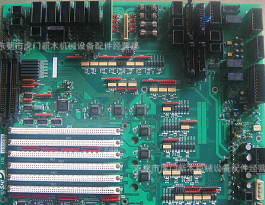In the process of assembling and soldering circuit boards, I often hear the term IMC. What exactly is IMC? What role does it play in the process of PCB soldering? Will it affect the strength after welding? So what is the thickness of the IMC to be more reasonable?
The following is an introduction about the relationship between PCB soldering strength and IMC.
1. What is IMC?
IMC is the abbreviation of [Intermetallic Compound], and the Chinese should be translated into [Intermetallic Compound] or [Intermetallic].
And IMC is a chemical formula, not an alloy, nor a pure metal.
Since IMC is a chemical molecular composition, energy must be given to the formation of IMC, which is why the solder paste needs to be heated during the soldering process, and only pure tin (Sn) in the composition of the solder paste can interact with the copper base ( OSP, I-Ag, I-Sn)) or nickel base (ENIG) undergoes a diffusion reaction in strong heat, thereby generating a strong interfacial IMC.
2. What is the difference between [alloy] and [Intermetallic Compound]?

The interface metal compound is a compound formed by more than two metal elements in a "fixed ratio". It is the result of a "chemical reaction" and is a pure substance. For example, such substances as Cu6Sn5, Ni3Sn4, AuSn4...etc.
An alloy is a mixture of two or more metals. The ratio is not fixed and can be adjusted at any time. It is only necessary to uniformly mix different elements together.
So you can say that men and women mixed together are called alloys; and the children born after the union of men and women are called compounds. Will this metaphor be beaten?
3. Since it is called "Solder Paste", why are there other metal components in it?
This is because the melting point of pure tin is as high as 232°C, which is not easy to be used for general PCB board assembly and soldering, or current electronic parts cannot reach such high temperature, so it must be mainly tin, and then other alloy solders are added to reduce its Melting point, in order to achieve the main purpose of mass production and energy saving, and the secondary purpose is to improve the toughness and strength of the solder joint.
For example, adding a small amount of silver and copper to make SAC305, its eutectic point drops to 217°C. Adding copper and nickel to make SCNi, its eutectic point becomes 227°C. This is a very interesting question. Why does the eutectic point of two metals with high melting point decrease greatly after mixing them in a certain ratio? Friends who are interested can first find the binary equilibrium metallographic diagram of tin-lead for reference. one time.
4. I often see the chemical formulas of Cu6Sn5, Ni3Sn4, Cu3Sn, AuSn4, Ag3Sn and PdSn4 in IMC. What is the formation and location of these chemical formulas?
The surface treatment of copper base PCB, such as OSP (organic solder mask), I-Ag (dip silver), I-Sn (dip tin), HASL (tin spray) and solder paste, in high heat reflow The benign IMC Cu6Sn5 will be formed in the furnace. As time goes by, or the PCB passes through the reflow furnace for too long, it will slowly regenerate the inferior IMC Cu3Sn.
Nickel-based surface-treated PCBs, such as ENIG, ENXG, and ENEPIG, will form benign IMC Ni3Sn4 after being combined with solder paste in a high-heat reflow furnace.
Gold (Au), silver (Ag), palladium (Pd) can also form AuSn4, Ag3Sn and PdSn4 compounds with tin (Sn), but it is a roaming IMC, which is harmful to the strength of solder joints. The biggest role of gold and silver on the solder pad is to protect the bottom nickel and bottom copper from rust. The thicker the gold and silver, the weaker the solder joint strength, but it cannot be so thin that it cannot fully cover the bottom nickel and bottom copper., Otherwise it will not be able to protect the bottom nickel or bottom copper.
5. What is the strength of the various IMCs?
▪ Remind again that welding is a chemical reaction.
▪ Take the copper-based soldering pad as an example, good soldering will immediately generate η-phase (read Eta) benign Cu6Sn5, and it will grow thicker with the accumulation of soldering heat and aging time.
▪ In the process of aging, the solder joint will grow malignant ε-phase (read Epsilon) malignant Cu3Sn on the original Cu6Sn5. Generally speaking, the welding strength of the copper base is better than that of the nickel base, and the reliability is also higher.
▪ The thicker nickel-based nickel immersion gold and electroplated nickel-gold gold have a thinner IMC and easier to form gold brittleness. Only after AuSn4 migrates, the nickel base will form Ni3Sn4, but its strength is the original Not as good as Cu6Sn5.
6. Is the thickness of the IMC the thicker the better?
As long as the interface IMC grows out and grows uniformly, it is enough, because the IMC will grow and thicker with the accumulation of time and heat. When the IMC grows too thick, the strength will deteriorate and it will be brittle. This is a bit like the cement between bricks and bricks. The right amount of cement can combine different bricks, but if the cement is too thick, it is easy to be pushed down.
The generation speed of IMC is basically proportional to the square of time and temperature.
The above is an introduction about what IMC is, and the relationship between PCB soldering strength and IMC.